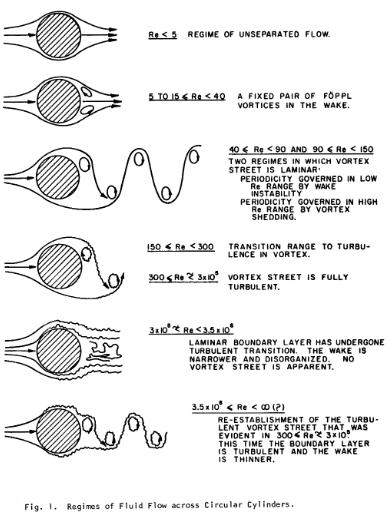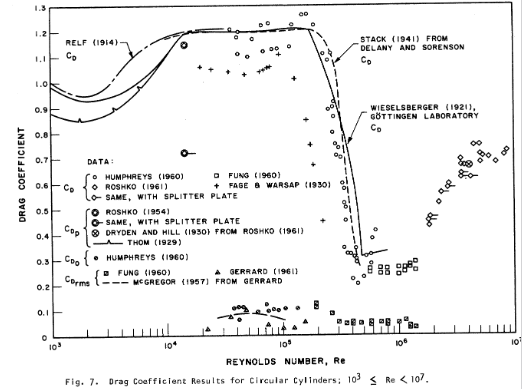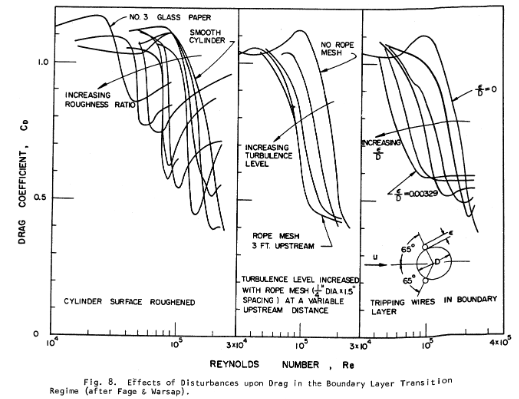Hi, just for explanations,
* I've chosen 40m/s to derive an upper bound for the drag force
* form drag is there to make the estimation a bit more realistic, because the line is usually not totally straight towards the airflow
* velocity is projected according to the tilt angle, e.g. 0° means nil form drag and 90° form drag only
* I've chosen a drag coefficient that is plausible for the given Reynolds Number.
* The drop towards a low drag coefficient happens at a larger Reynolds Number range, 3e5 - 3.5e6 (for smooth cylinders)
also called "Critical Flow Regime" - see [1]
- the boundary layer is turbulent in this case and the drag coefficient sharply drops to a minimum 0.2 - 0.3 (known as "drag crisis")
BUT I've computed a lower Reynolds Number in the e4 range, that means we're in the subcritical flow regime.
Turbulent free flow and/or the roughness of the cylinder move the minimum towards lower Reynolds numbers, but the minimum will be shallower as well. I think we're still outside the range when this happens. I've even found studies that predicted an increase of the drag coefficient with higher free flow turbulence intensity.
In general my estimate was just for the case no wind or only very slight wind (otherwise I'd have to consider wind velocity etc.) It's true that we have always turbulences in the air, but the turbulence intensity will be low, because we have a fast moving fly line through a very slowly moving fluid in this case.
In summary, as long as not someone would convince me that the "drag crisis" actually happens for fly lines I'll stick to the Cd value of 1.
I've spend last year a considerable amount of time for research about this subject, because the next iteration of my fly line model will feature aerodynamic drag.
I can't and I don't want to draw any conclusions about other works here, this would be fully OT and outside the scope of this thread.
Greetings,
Torsten
--
Literature:
[1] LIENHARD, John H., et al. Synopsis of lift, drag, and vortex frequency data for rigid circular cylinders. Pullman, WA: Technical Extension Service, Washington State University, 1966.
Attachment:
* all figures from [1], flow regimes, drag coefficient vs. Reynolds number for a cylinder, effects of disturbances upon drag

- flow_regimes_cylinder.png (134.57 KiB) Viewed 951 times

- drag_coefficients_cylinders.png (93.42 KiB) Viewed 951 times

- effects_of_disturbances_upon_drag.png (116.25 KiB) Viewed 951 times
